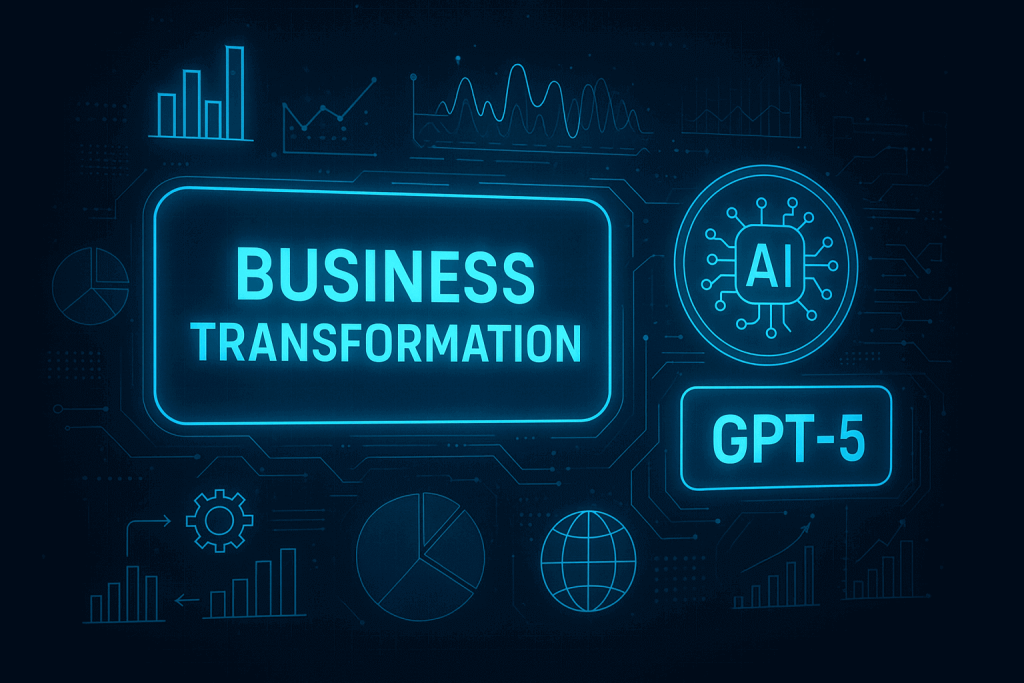You know how everyone’s buzzing when a new AI model drops? Well, when I got my early invite to try Anthropic’s latest Claude Opus and Sonnet models, I felt a bit like a kid at a surprise birthday party (if the cake was capable of writing prose and debugging my code). The internet’s gone wild—with some justified excitement—and frankly, after weeks living with these upgrades, I’ve got a bunch of stories, surprises, and a couple of gripes to share that you won’t find in a press release. Let’s peel back the curtain and see what real life with Claude Opus and Sonnet is all about.
1. Opus 4 and Sonnet 4 – A Day in the Life (And One or Two Curveballs)
When Anthropic released the new Claude Opus 4 and Sonnet 4 models in June 2024, the internet buzzed with excitement—and for good reason. As someone who’s spent several weeks living with both models, I’ve had a chance to see how the hype measures up to real-world use. This section offers a grounded, first-person Claude Opus review, with a close look at Claude Sonnet features and, most importantly, the elusive art of AI writing tone.
Initial Impressions: More Than Just Benchmarks
From the start (see 0:00–0:13), it was clear these models weren’t just incremental updates. I found myself switching between Opus and Sonnet on the Claude.ai platform, testing everything from casual emails to more technical prompts. The models are available to anyone on a paid plan, and you can toggle between them easily—something I did a lot, sometimes just to see if the price difference really translated into a noticeable gap in capability.
Research shows that Opus 4 stands out for its human-like writing, while Sonnet 4 edges ahead in some coding benchmarks, despite being the more affordable option. As one reviewer put it:
“Let me just tell you, writing style unmatched. Coding ability…matches the demos that we just saw on Google IO.”
Switching Between Opus and Sonnet: Price vs. Capability
I’ll admit, I was skeptical at first. Could a less expensive model like Sonnet 4 really keep up with Opus 4 in daily tasks? Surprisingly, the answer is yes—at least in certain areas. While Opus 4 consistently delivered the most natural, “un-aiish” writing I’ve seen from any AI, Sonnet 4 was no slouch, especially when it came to coding tasks. In fact, benchmarks like SWE Bench show Sonnet 4 performing slightly better than Opus 4 in coding, which is unexpected given the price difference.
But here’s where things get interesting: the differences aren’t always where you’d expect. Sometimes, you get what you pay for. Other times, you get more. For example, if you’re focused on writing emails or documents that need to sound like they came from a real person, Opus 4 is in a league of its own. But if you’re running code-heavy prompts, Sonnet 4 might actually be the smarter pick, especially if you’re watching your budget.
The ‘Broken Coffee Machine Email’ Test: Why Tone Matters
One of my go-to tests for any AI model is the infamous “broken coffee machine email.” It’s a simple prompt: Write an email to my boss about the broken coffee machine (see 5:35–6:59). What I’m really looking for is tone—does the AI sound like a person, or does it slip into that uncanny, robotic cadence?
With Opus 4, the results were striking. The email it generated read like something I’d actually send:
“Hi, boss. I wanted to bring to your attention that the office coffee machine stopped working this morning. It’s not powering on at all. I’ve checked that it’s properly plugged in and tried different outlets…”
It went on to offer three practical solutions—contacting the manufacturer, researching replacements, or calling a local repair service. There was no awkward phrasing, no telltale signs of AI-generated text. It just sounded…human. And this wasn’t after hours of prompt engineering; it was a basic, straightforward request.
This is where Opus 4 really shines. If you care about AI writing tone, this model sets a new standard. Many users, myself included, have gravitated to Claude specifically for its tone, and Opus 4 takes that reputation even further.
Unexpected Quirks and Everyday Surprises
Living with these models day-to-day, a few quirks have popped up. Sometimes, Sonnet 4 will surprise you with a clever coding solution that you wouldn’t expect from a lower-priced model. Other times, Opus 4’s writing feels so natural that you forget you’re reading something generated by AI. But there are moments—rare, but real—where the models swap strengths, or where the “cheaper” option outperforms the flagship.
Ultimately, using Claude Opus 4 and Sonnet 4 isn’t just about picking the “best” model. It’s about understanding their strengths, switching between them as needed, and appreciating the subtle ways they handle language, tone, and logic. Whether you’re writing a quick email or building a complex script, these models have changed what I expect from AI—and, honestly, they’ve raised the bar for everyone else.
2. Benchmarks, Vibes, and the Great AI Leap Forward
Let’s talk benchmarks. When Anthropic unveiled the new Claude Opus and Sonnet models, they didn’t just mention improvements—they led with the numbers. Specifically, they highlighted the SWE Bench (Software Engineering Benchmarks AI), a set of practical, real-world coding problems that software engineers actually face on the job (3.05–3.14). These aren’t just theoretical puzzles. They’re the kind of tasks that separate a flashy demo from a tool you’d trust in your workflow.
What’s striking is how these new models performed. Both Opus and Sonnet didn’t just inch past the competition—they smashed the benchmarks. According to the latest results, Opus 4 and Sonnet 4 are hitting pass rates between 72% and 80% on the SWE Bench as of June 2024. That’s not just a step up; it’s a leap. For context, six months ago, the high-water mark for these same benchmarks was in the 30–40% range (3.43–4.00).
‘Back then, cracking 30 to 40% of these problems was considered groundbreaking…right now we’re looking at 72 up to 80%.’
It’s worth pausing on that for a second. I remember when OpenAI’s early “thinking” models first started making waves—around November 2023, if memory serves (3.45–3.51). At the time, just getting a third of these real-world coding tasks right was seen as a breakthrough. Now, in less than a year, we’re seeing models double that performance. Research shows that pass rates in practical coding tasks have doubled within six months, which is a staggering pace for any technology, let alone something as complex as AI.
Of course, benchmarks like SWE Bench are only one part of the story. They’re a useful yardstick, especially for comparing the best AI model 2024 contenders. But as someone who uses these tools daily, I can’t help but notice that the numbers don’t always capture the full experience. There’s a difference between a model that aces a test and one that feels reliable, intuitive, and helpful in the unpredictable flow of real work.
That’s where the “vibes” come in. I’ve found that even models with similar benchmark scores can feel very different in practice. Sometimes, a model that’s technically better on paper might stumble in day-to-day use—maybe it’s slower, or it misinterprets context in subtle ways. Other times, a slightly lower-scoring model just feels more natural to interact with. It’s a reminder that while benchmarks like SWE Bench are setting new standards for software engineering benchmarks AI, they don’t always tell you how a model will fit into your workflow.
Still, the gap between Claude Opus, Sonnet, and their predecessors is hard to ignore. If you compare these results to GPT-3.5 (often called “03”), the difference is clear: Opus and Sonnet are not just beating older models—they’re competitive with even the unreleased Google “deep search” previewed at recent developer events (3.55–4.15). The competition is heating up, and it’s not just about Anthropic versus OpenAI anymore. The “Claude vs GPT-4.5” debate is real, and the numbers are starting to make it interesting.
But again, I keep coming back to the daily experience. Benchmarks can tell you which model is technically ahead, but they can’t tell you which one will make your workday smoother or your code reviews less painful. Studies indicate that while pass rates are important, user comfort and experience remain crucial. Sometimes, it’s the little things—a model that remembers your preferences, or one that explains its reasoning clearly—that make all the difference.
So, while I’m genuinely impressed by how far these models have come in such a short time, I’m also cautious about letting the numbers do all the talking. The great AI leap forward is real, and it’s happening fast. But as always, the real test is how these tools feel when you’re living with them, day in and day out.
3. Surprising Superpowers: Beyond Writing (Code, Context, and a Touch of Magic)
When I first started using the new Anthropic Claude Opus and Sonnet models, I expected the usual improvements—maybe a bit more fluency, a faster response, or a cleverer turn of phrase. But what I found was something much more surprising, especially for anyone interested in AI coding assistants or looking for practical, daily use of Anthropic Claude. The real magic isn’t just in how these models write, but in what they can now do. And that shift is bigger than it sounds.
Let’s start with context retention. In the past, even the best AI developer tools would lose track of a project after a few back-and-forths. You’d get halfway through building a script or analyzing data, and suddenly the model would forget what you were doing. It was frustrating, especially if you were trying to use an AI coding assistant for anything more than a quick code snippet. But with the latest Claude models, that’s changed. The context retention muscle is real. I’ve seen projects that span hours, not just minutes, and the model keeps up—remembering details, variables, and even the quirks of my workflow. This is a leap that makes Claude genuinely useful for real-world, ongoing tasks.
The API upgrades are another game changer. Previously, Claude could generate code, but actually executing that code or performing real data analysis was out of reach. Now, it’s not just about talking about code—it’s about running it, checking outputs, and iterating in real time. As someone who’s tried to build small tools and scripts with earlier models, I know how often things would break or just not work as expected. There was always a sense that these models were “almost there,” but not quite reliable enough for anything serious. That’s no longer the case.
To put it in perspective, the Claude code command-line interface used to let tasks run for maybe one to five minutes. That was fine for quick jobs, but anything more complex would time out or fail. Now, thanks to the latest API improvements, tasks can run for up to seven hours. That’s not a typo. As I heard in the keynote and experienced myself,
“Before, it was like 1 to five minutes. Now it routinely runs for like 15, 20 minutes. In the keynote today, they stated it can run for up to seven hours.”
This isn’t just a technical upgrade—it’s a fundamental shift in what’s possible. Suddenly, you can automate deep research, run long data analyses, or build tools that actually finish their work, all with the help of an AI coding assistant.
What’s even more striking is how these changes open up new possibilities for non-developers. Research shows that Claude’s new toolkit unlocks genuinely useful, hands-off automation—even for those without a programming background. I’ve seen it firsthand. For example, I decided to test the limits by asking Claude to build a mini dashboard for my cat’s snack schedule. It was a whimsical idea, but the model handled it effortlessly. No endless debugging, no half-baked output—just a working tool, built in minutes. I didn’t have to run the prompt multiple times or tweak the code endlessly. It just worked. That kind of reliability is rare in AI developer tools, and it’s what makes the new Claude models stand out.
This isn’t just about flashy demos or benchmarks. It’s about real, practical improvements that change how we interact with AI on a daily basis. Whether you’re a developer looking for a more reliable coding assistant, or someone who just wants to automate a few tasks without learning Python, the new Claude models deliver. The context retention means you can work on bigger, more complex projects without losing momentum. The API upgrades mean you can trust the model to actually execute your ideas, not just suggest them. And the hands-off automation means you can focus on what matters, while Claude handles the rest.
In the end, living with Anthropic’s new Claude Opus and Sonnet models feels less like using a tool and more like collaborating with a capable partner. The superpowers are real—and they go far beyond writing.
TL;DR: Claude Opus and Sonnet are more than just incremental upgrades—they feel like a new chapter in practical AI, particularly for writing and coding. If you’re serious about productivity or creativity, give them a whirl yourself. The hype might actually be onto something.





